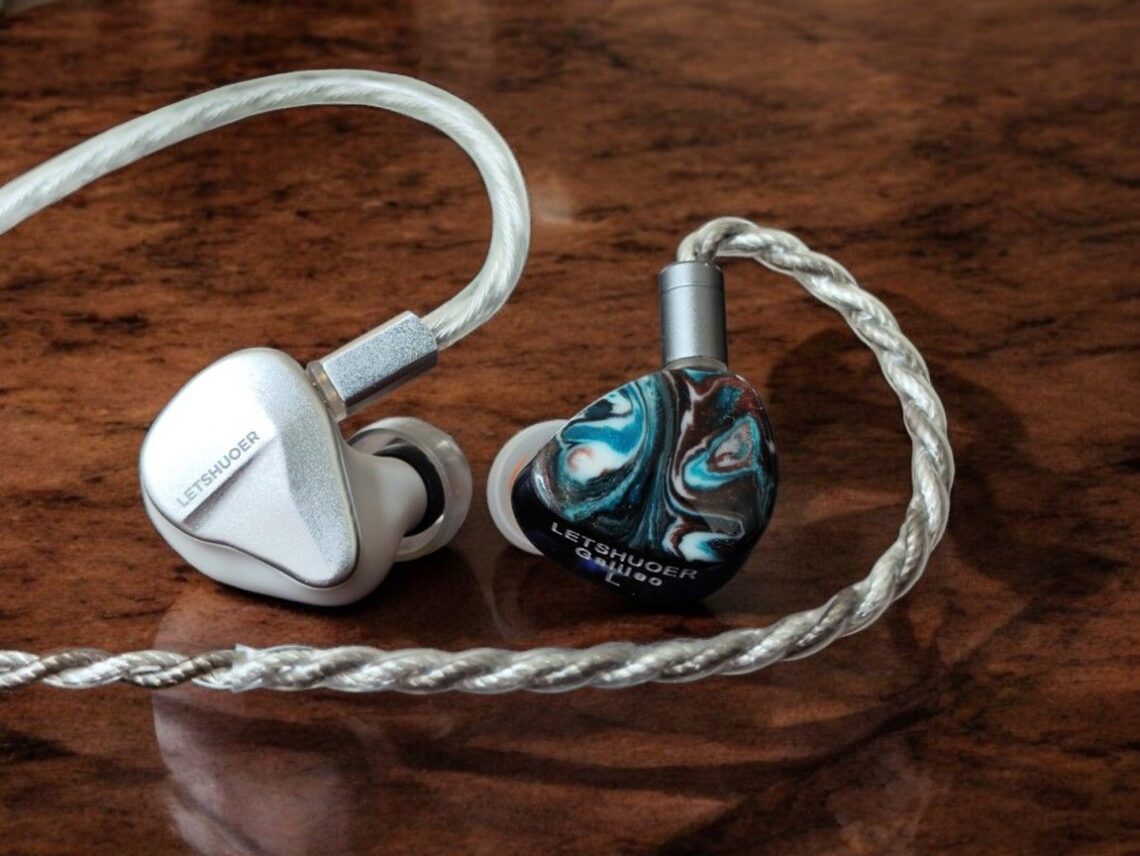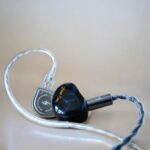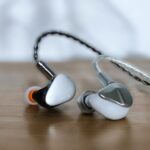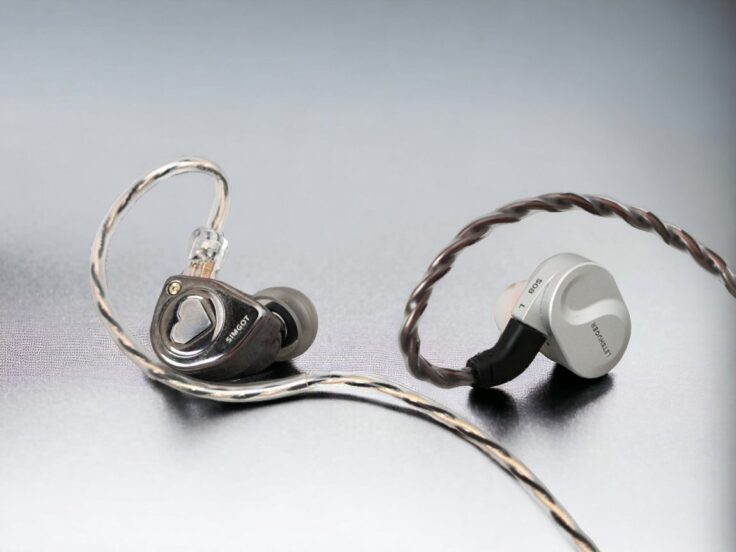LETSHUOER Cadenza 4 vs. Galileo Comparison Review
The bad news is that the Letshuoer Galileo is out of production, with no successor announced. The good news is that the brand new Cadenza 4 has been similarly tuned.
The recently launched Letshuoer Cadenza 4 is a hybrid quad-driver in-ear monitor earphone. The number in its name refers not to a lineage but to the fact that the Cadenza 4 has four drivers, one dynamic driver, and three balanced armatures. You can read my full review of the Cadenza 4 here.
The Letshuoer x Gizaudio Galileo is a dual-driver earphone with a meticulously designed resin housing and innovative resonance handling. It features a clean and well-balanced natural sound with an impressive level of detail. The Galileo uses a 10 mm dynamic driver along with a balanced armature driver. You can read my full review of the Galileo here.
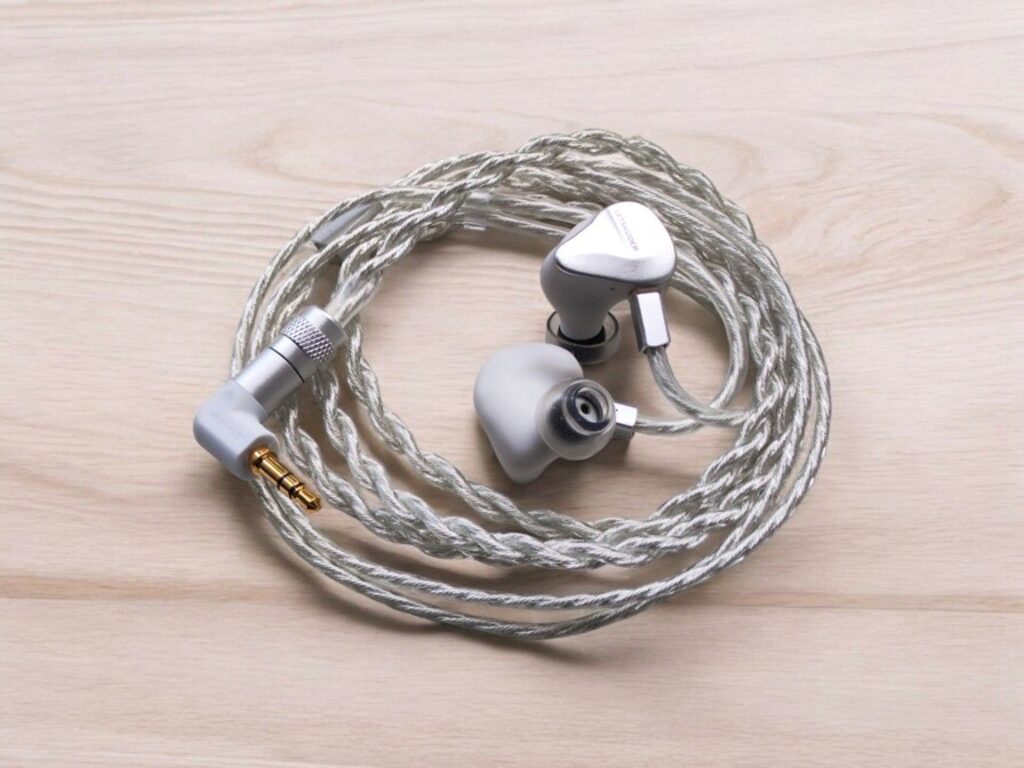
LETSHUOER CADENZA 4 SPECIFICATIONS
- Wired In-Ear Monitor
- Driver: 10mm beryllium coated DD, 1 Sonion BA, and 2 Knowles BA
- Impedance: 15 ohms
- Sensitivity: 102 dB
- Frequency Response: 20Hz – 40kHz
- Chassis Material: 3D-printed resin, anodized aluminum faceplate
- Cable: 1.2 m, 392-strand silver-plated monocrystalline copper
- Earphone connectors: 0.78 mm dual pin
- Audio Connectors: 90-degree angled 2.5mm, 3.5mm, and 4.4mm interchangeable connectors
Check the current price here:
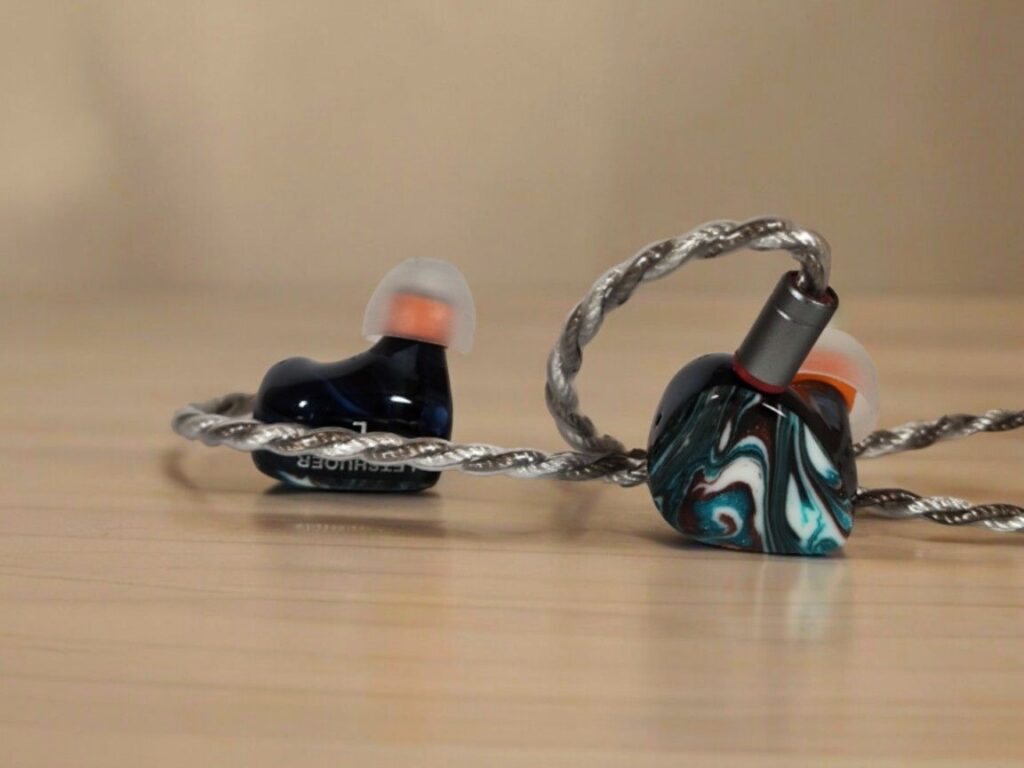
LETSHUOER x GIZAUDIO GALILEO SPECIFICATIONW
- Two drivers: one 10 mm dynamic driver, one balanced armature driver
- Impedance: 14Ω
- Sensitivity: 104 dB
- Frequency Response: 20Hz – 20KHz
- Cable Length: 1.2 m
- Pin Type: 2-pin Connector (0.78mm)
- Plug Type: 3.5mm
Price when reviewed: 109 USD on sale, 140 USD MSRP.
- Price on Amazon: Letshuoer x Gizaudio Galileo
- Price on Linsoul: Letshuoer x Gizaudio Galileo
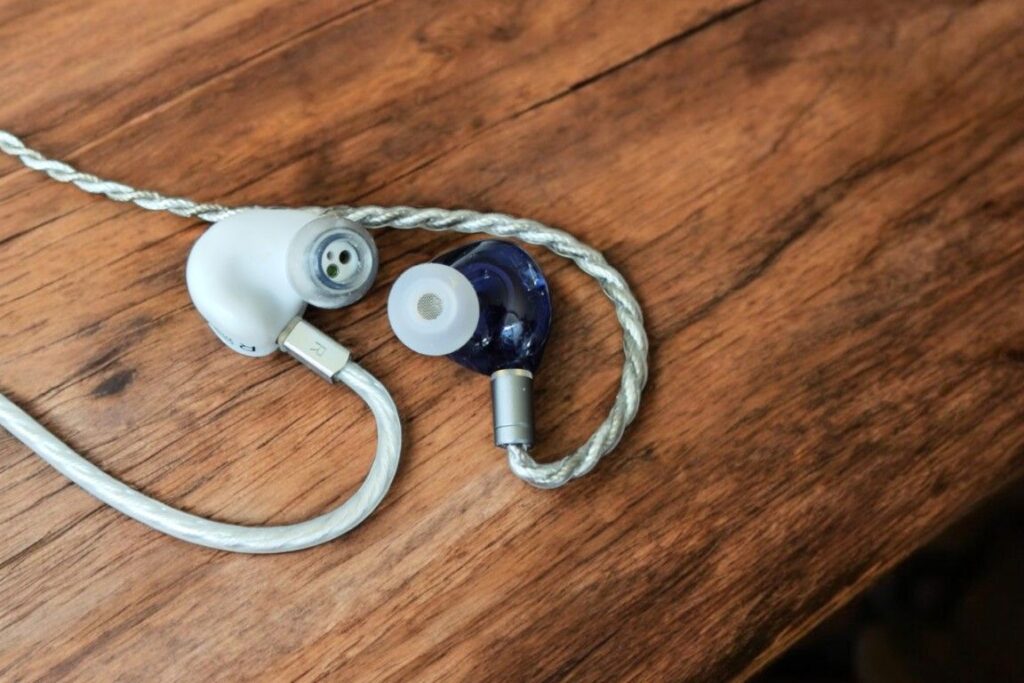
LISTENING IMPRESSIONS
I used the Topping A90 as an amplifier and the RME ADI-2 DAC FS as a source. The RME sounds excellent by itself, but it’s more practical for me to use the Topping. Both IEMs work well with portable gear, too. I used the Azla SednaEarFit Crystal tips on the Cadenza 4 and the Spinfit CP145 tips on the Galileo. I’ll comment about tips further below. Here is my track-by-track comparison:
In The Mountains by Espen Eriksen Trio
Cadenza 4: Starting out with a nice jazz trio, the standing bass is strong, but not as overly powerful as it often is rendered. I’d say it is pretty perfect, it has great definition and enough presence for me. The piano is extremely clear yet has a good amount of body. The percussion is beautiful and the treble is effortless. Imaging is superb and the sound stage is generally very wide.
Galileo: The Galileo has somewhat less bass presence, but the quality is good. Otherwise, they are quite similar; the Cadenza 4 is slightly more articulate with better imaging. The Galileo has a crisper tone on the piano.
Jambi by Tool
Cadenza 4: The guitar riffs are very textured without being edgy. The bass is definitely not on the heavier side, but it has great definition. The vocals stand out clearly in the mix. It sounds very effortless and spacious.
Galileo: They are relatively similar, but the Galileo has a more mellow tone to the vocals, while the Cadenza 4 is a bit brighter. The tonal balance is very similar, and the detail level is a tad higher with the Cadenza 4.
Smile by Pearl Jam
Cadenza 4: The bass quantity is just right, and the bass is rendered with great definition. The separation of instruments is very satisfactory, and you can easily identify what is going on on this rather busy track. Eddie Vedder’s vocals stand out clearly and are rendered without sibilance.
Galileo: They sound relatively similar, but the Galileo is not as clear and articulate as the Cadenza 4. There is a slight shift in the tonal balance, but it is more similar than not.
Black Crow by Cassandra Wilson
Cadenza 4: The imaging and separation is extremely good; there is a great sense of depth and spaciousness. The vocals are in the center of attention, but the bass drum is still present enough.
Galileo: The bass is even more polite. The vocals are somewhat lighter and brighter, but mostly they have very much in common.
Desert Island Disk by Radiohead
Cadenza 4: The guitar is crisp, and the bass is pulsing nicely but quite politely underneath. Thom Yorke’s vocals are brought to the front in an excellent manner.
Galileo: The bass is polite, the guitar is crisper, and the vocals are more intense.
As Before by Olga Konkova
Cadenza 4: The cajôn drum throws a punch, but the piano gets the focus, like it should. The female vocal is absolutely wonderful, so is the piano. Natural and organic, effortless, and clear without sharp edges.
Galileo: The bass is very similar. The piano and vocals sound slightly crisper and clearer, although not more detailed. The Cadenza 4 has a tad warmer sound.
It Could Be Sweet by Portishead
Cadenza 4: The female vocals are perfectly rendered, clear, and natural; there is not a hint of sibilance. The bass is polite but present. There’s great control and authority, but the bass is far from being overly dominant.
Galileo: This sounds very similar, but the bass is of better quality with the Cadenza 4.
Brahms’ Symphony No. 2 III by Paavo Järvi
Cadenza 4: The kettle drums are not massive but are punchy, and the bass goes deep. The strings and wind instruments are beautifully rendered. The separation of instruments is excellent, and even though there is good space between them, they are rendered with a good amount of body and presence.
Galileo: The bass region is pretty skinny and lacks definition. The rest is excellent, though, the strings have some extra warmth. The Galileo sounds smoother here than the Cadenza 4.
Young Vivaldi’s Violin Concerto RV 820 III by Ensemble Modo Antiquo
Cadenza 4: The strings are absolutely terrific sounding. They have bite and attack, but at the same time, they have a rounded and organic feeling too them. There is no harshness, but they’re not laid back either. Brilliant.
Galileo: sounding quite similar, but the Cadenza had slightly more energy in the upper mids, the Galileo sounds smoother and less crispy.
Limit to Your Love by James Blake
Cadenza 4: Blake’s vocals are clear and crisp. The bass is really excellently rendered, again, the subbass is present and very controlled, not as dominant as it often can become.
Galileo: The bass is severely lacking. The earphones cannot handle the massiveness of the bass on this track, revealing the true weak spot of the Galileo.
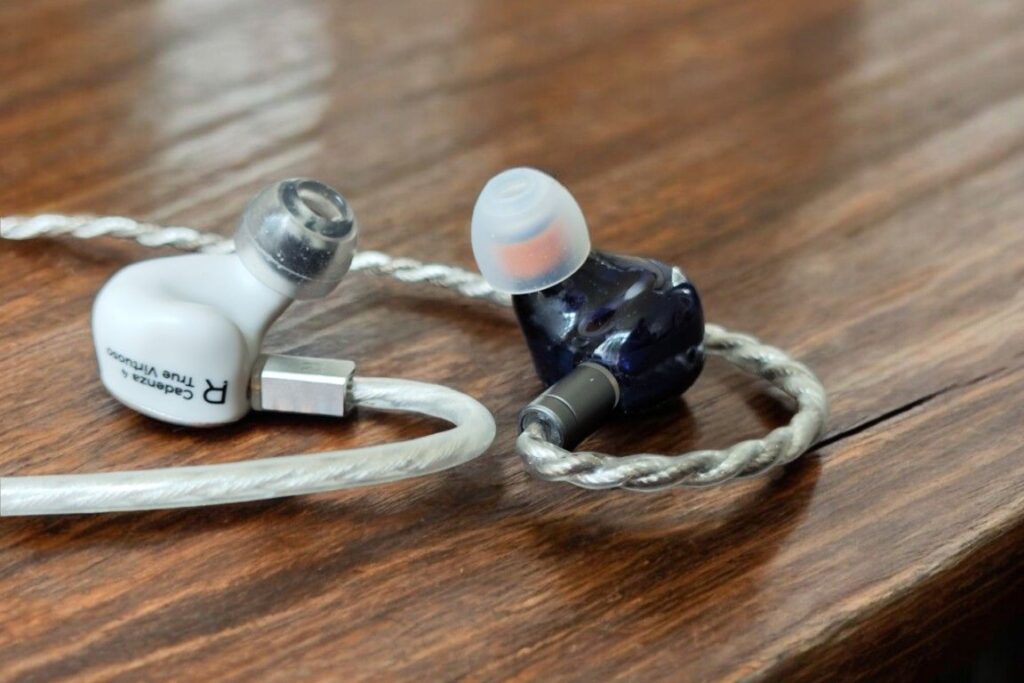
EAR TIPS
I did the comparison above with the AZLA SednaEarFit Crystal mounted on the Cadenza 4. They make the Cadenza 4 quite mid-range focused, like the Galileo.
However, I also went through the playlist, comparing the Galileo and Cadenza 4 with the CP145 tips on both. There are some significant changes to the sound of the Cadenza 4: The bass gets a lot stronger, and of course significantly stronger than the quite bass light Galileo. The tonality also shifts towards more warmth, and often the roles are reversed in terms of mid-range tonality, where the Galileo gets to be a bit crisper in the mids than the Cadenza 4.
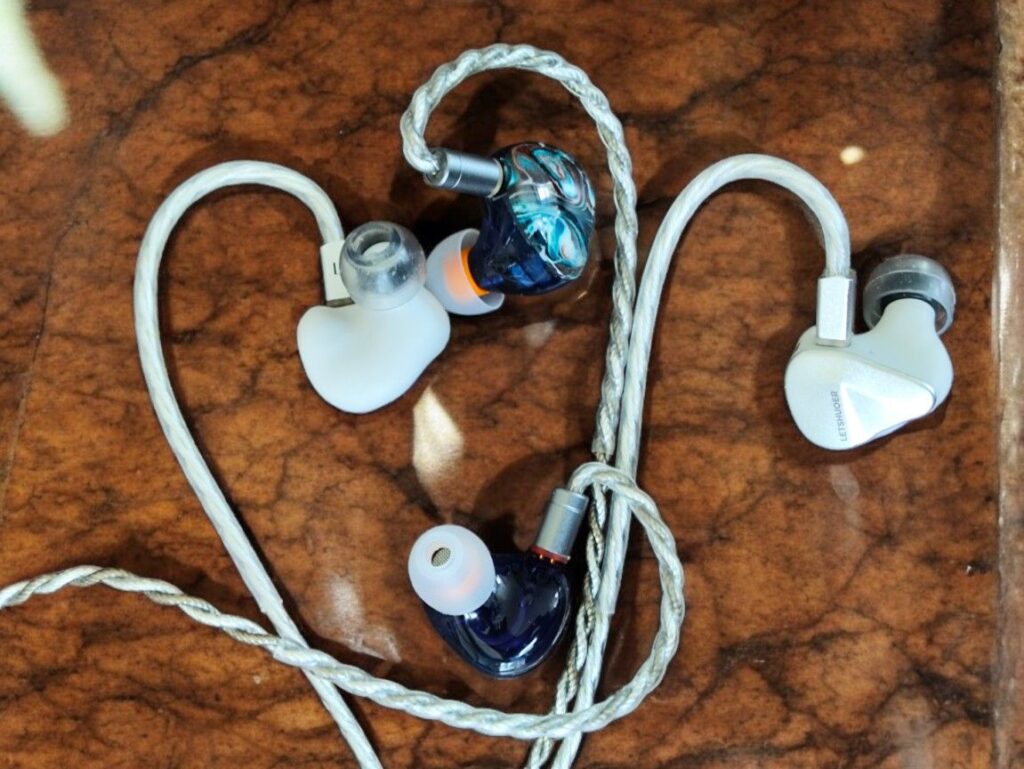
WRAPPING IT UP
Sound Signature
Both earphones bring the midrange into focus. The Galileo is bass light. With the Crystal tips, the Cadenza 4 is too, but still has more bass quantity than the Galileo. With the CP145 tips, however, the Cadenza 4 is not leaving you craving more bass, unless you’re a total bass head.
Treble
Both have a nice organic-sounding treble that does not get harsh but still has great presence. The Galileo is a bit more ethereal and slightly diffuse, but in a nice way.
Midrange
They both shine in the midrange and bring the vocals of every song into focus. They are also great with guitars, strings, and pianos, etc. Using the Crystal tips on the Cadenza 4, the Galileo often sounds slightly lusher in comparison.
With the CP145 on the Cadenza 4 the tables turn to some degree; I often experience the Galileo to be slightly brighter and crisper in the midrange. The Galileo feels a little smooth, light and ethereal in comparison.
Bass
This is where they really diverge, and significantly so. With the Crystal tips, the Cadenza 4 has a very well defined, tight, and deep reach, albeit not very high in quantity.
The Galileo has even less bass presence, and occasionally it cannot handle the deepest bass in a good way.
With the CP145, however, the Cadenza 4 has a very powerful yet high-quality bass, making it very different from the Galileo in the lower regions.
Soundstage and Imaging
They both have good soundstage. With the Crystal tips on the Cadenza 4, they are pretty similar. Both have excellent imaging, but the Cadenza 4 is even more precise and coherent. However, with the CP145 tips, the bass sometimes camouflages a bit of the clarity in the other regions, making the Galileo a bit more open-sounding.
Detail, Dynamics and Timbre
When it comes to the general detail level, let’s first talk about the bass. There is no doubt that the Cadenza 4 has better bass, especially subbass, where the Galileo is definitely underwhelming.
In terms of midrange detail, they are both very nuanced, clear, and articulate. The mids on the Galileo have a transparent tonality , but I think the detail level is at least as good with the Cadenza 4. The same with the treble; both are very detailed and clear without becoming too bright.
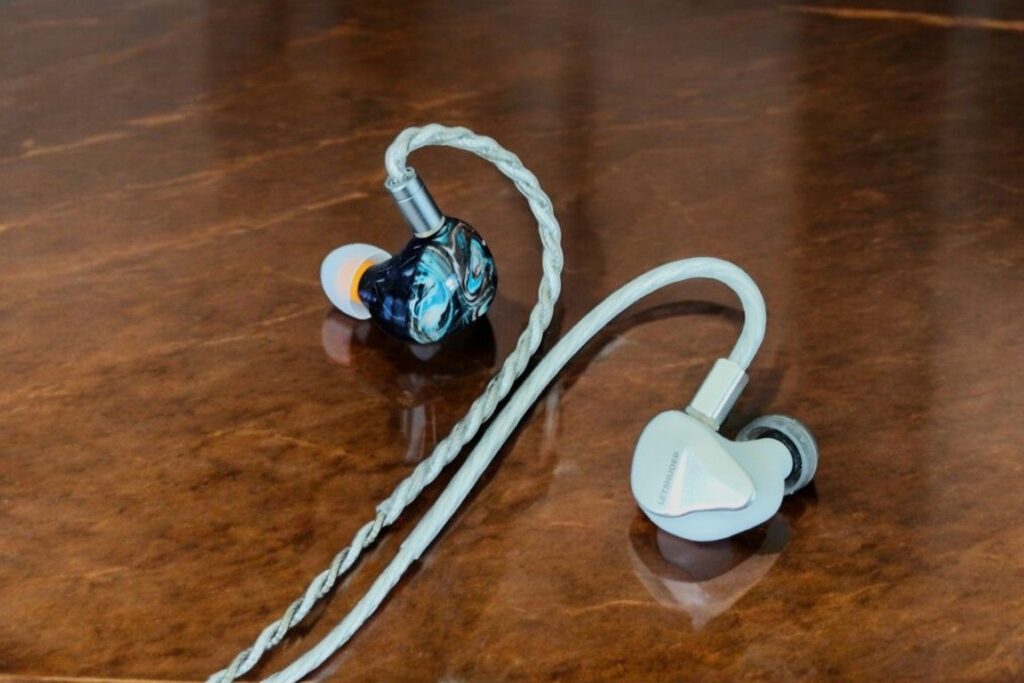
CONCLUSION
I am very tempted to say that the Cadenza 4 is a Galileo with better bass. There certainly is some truth to that, even if it does not completely cover the differences.
First, I must say that I am a big fan of both earphones. The thing I’m most enthusiastic about is how they put the midrange in the center of attention and deliver fabulous sounding vocals, strings, and every other midrange-focused instrument. That is why I absolutely adore about the Galileo: it is the opposite of the typical offerings of V-shaped-frequency response curved IEMs. Second, they both have a very nice, clean treble that sounds organic and manages to be crisp and clear without ever becoming too bright or sibilant.
The area where they clearly diverge is in the bass. The Galileo is bass-light. Mostly, I find it to be very enjoyable because it has a polite bass presence, and the quality is usually very acceptable. However, sometimes I definitely would like some more bass quantity, and with certain tracks, the quality suffers in the sub-bass region. That is never an issue with the Cadenza 4, which has excellent bass performance.
Both have great imaging and a good soundstage. With the Azla Crystal tips on the Cadenza 4, it’s a bit more open sounding than the Galileo, with the CP145, it’s the other way around.
Even though the Galileo also has a very good detail level, the Cadenza 4 is more coherent and especially better in the bass.
To finish where I started, if you like the Galileo but would like it to have significantly better bass quality and, depending on the tips, more bass presence, the Cadenza 4 might be for you.
Purchase links (you can still buy the Galileo):
- Amazon: Letshuoer x Gizaudio Galileo
- Linsoul: Letshuoer x Gizaudio Galileo
Any purchase you make on Amazon or Linsoul with any of our affiliate links will give us a small provision at no cost to you.
We only get a provision for items that are not returned, so there’s no incentive for us to recommend something that’s not good.
Linsoul : Headphones, Earbuds, Wireless Earbuds, Desktop DAC/AMP, Portable DAC/AMP, Digital Audio Players,
Amazon: Headphones, IEMs, Headphone Amplifiers, Home Audio or Anything else.
.
If you enjoyed this article or other content on The Headphoneer, you might consider leaving a small donation to keep this website up and running. No donation is too small. Thanks for supporting us!
If you like our work please follow us on Instagram, Facebook and Twitter , it will help us grow. Sharing is caring 🙂


